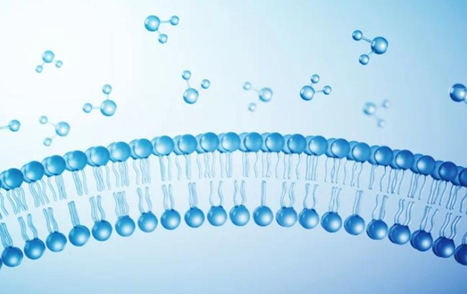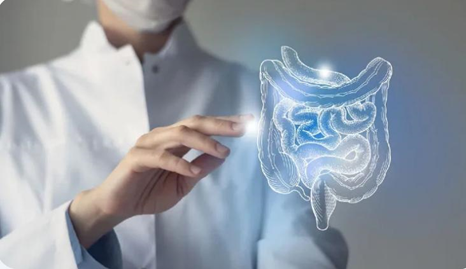Permeability significantly impacts the oral absorption of drugs. It determines how easily a drug passes through biological membranes, influencing its effectiveness. Understanding permeability helps in predicting how drugs behave in the body, their absorption rates, and eventual bioavailability. High permeability often ensures better absorption and therapeutic efficacy. Conversely, drugs with low permeability might not reach effective concentrations in the bloodstream. Healthcare professionals and researchers work to understand these dynamics to improve drug delivery and patient outcomes. Advancements in pharmaceutical technologies introduce innovative methods for enhancing permeability, allowing for better management of drugs with low natural absorption capabilities. This blog delves into the intricacies of drug permeability, its effects on oral absorption, and potential enhancement strategies for low-permeable drugs.

Understand Drug Permeability and Its Influencing Factors
Drug permeability refers to a compound’s ability to traverse cell membranes, specifically intestinal walls in oral administration. This property depends on various factors, including the drug’s physicochemical characteristics. Molecular size and shape significantly affect permeability; smaller, non-ionized molecules permeate membranes more efficiently. Lipophilicity is another critical factor. Drugs must be sufficiently lipophilic to dissolve in the lipid bilayers of cell membranes, yet not so lipophilic that they become trapped within the membrane. Environmental pH influences ionization states, altering permeability as ionic drugs typically cross membranes less efficiently. Additionally, the presence of efflux transporters like P-glycoprotein actively pumps certain drugs out of cells, reducing permeation and absorption. Understanding these factors is crucial for designing drugs and formulations that maximize permeability and therapeutic efficacy, ensuring patients receive optimal treatment.
Impact of Permeability on Oral Drug Absorption
Influences Bioavailability
Permeability directly affects a drug’s bioavailability— the proportion reaching systemic circulation unchanged. Drugs with high permeability generally have higher bioavailability, leading to more predictable therapeutic outcomes. When a drug efficiently passes through the gastrointestinal membrane, its concentration in blood increases, ensuring efficient action. Conversely, poorly permeable drugs exhibit reduced bioavailability, potentially requiring higher doses to achieve therapeutic levels, which can lead to an increased risk of side effects. Enhanced permeability improves bioavailability and therapeutic consistency. Researchers exploit this understanding to devise strategies that overcome absorption barriers, optimizing bioavailability in formulations for low-permeable drugs. Tailoring drug delivery can substantially impact patient compliance and therapeutic success, underscoring permeability’s vital role in pharmacology.
Affects Absorption Kinetics
Absorption kinetics—how quickly a drug enters circulation—hinges on permeability. Drugs with high permeability typically exhibit a rapid onset of action due to efficient membrane crossing. This prompt absorption is critical for medications requiring immediate therapeutic effects, like painkillers or antihypertensives. In contrast, drugs with low permeability can exhibit delayed absorption, necessitating modified release formulations or higher doses. Controlled release technologies can mitigate slow absorption rates, delivering consistent plasma concentrations over time. By understanding absorption kinetics, researchers can design drugs tailored to therapeutic needs, optimizing the onset and duration of action. Such insights are vital for managing diseases and improving patient outcomes, demonstrating permeability’s pivotal role in drug therapy dynamics.
Interaction with Solubility
Permeability’s interaction with solubility profoundly affects drug absorption. Solubility determines how much drug dissolves in gastrointestinal fluids before permeation. Drugs must dissolve adequately to maintain a concentration gradient across the intestinal membrane. Low-solubility drugs can precipitate, limiting permeability and absorption. Such conditions are addressed by formulating drugs with enhanced solubility, like amorphous solids or nanosuspensions, which maintain effective drug concentrations. Permeability and solubility are interrelated parameters that determine oral drug absorption. Effective drug development considers both factors, striving to maximize dissolution and permeation. Through innovative solutions, researchers improve drug solubility and subsequent permeability, ensuring effective treatments.

Strategies to Enhance Oral Drug Absorption
Use of Permeation Enhancers
Permeation enhancers are chemical agents that augment drug absorption by modifying the barrier properties of cell membranes. They increase membrane fluidity or alter tight junctions, facilitating the passage of drugs with low intrinsic permeability. Common permeation enhancers include surfactants, lipids, and cyclodextrins. By disrupting membrane structure or forming reversible complexes, they improve permeability without permanent damage. Using these enhancers, drug formulations ensure higher efficiency for oral administration, particularly for macromolecules. A careful balance is critical; selecting appropriate enhancers avoids adverse effects while maximizing absorption. Continual research is vital in developing safe, effective permeation enhancers, securing better therapeutic outcomes for poorly permeable drugs.
Advanced Drug Delivery Systems
Advanced drug delivery systems, such as liposomes, nanoparticles, and hydrogels, provide innovative solutions to enhance drug permeability. These systems encapsulate drugs in biocompatible carriers, improving solubility and permeability. Liposomes, for instance, merge with cellular membranes to facilitate drug transfer directly into cells. Nanoparticles enhance solubility and protect drugs from degradation, improving bioavailability. Such systems offer controlled and targeted drug release, enhancing therapeutic efficiency and minimizing side effects. Advanced drug delivery technologies propel the development of oral formulations for poorly permeable drugs. Tailored delivery systems revolutionize treatments, ensuring drugs reach desired absorption levels and act effectively.
Prodrug Approaches and Molecular Modifications
Prodrug strategies enhance permeability by masking polar functional groups or modifying drug structures to better traverse membranes. Once absorbed, these prodrugs undergo enzymatic conversion to active forms. This method is advantageous for drugs with inherently low permeability. Molecular modifications, such as adding lipophilic moieties, improve membrane passage. Additionally, designing drugs with specific transporter interactions facilitates permeability by exploiting natural transport mechanisms. These strategies improve absorption and bioavailability, potentially reducing required dosages. By leveraging chemical modification, researchers create drugs that better meet therapeutic needs. Prodrug and molecular modification strategies pave the way for efficient treatments with improved absorption profiles.
Conclusion
Understanding drug permeability is crucial for optimizing oral drug absorption and therapeutic efficacy. It plays a pivotal role in influencing bioavailability and determining absorption kinetics. Effective strategies, such as permeation enhancers, advanced delivery systems, and molecular modifications, enhance absorption in poorly permeable drugs. These advances promise improved patient outcomes by ensuring that drugs achieve adequate concentrations in the bloodstream. The drug permeability study ensures that pharmaceutical interventions are safer, more effective, and tailored to individual patient needs. By prioritizing permeability in drug design, scientists pave the way for innovative treatments that enhance healthcare quality and patient health.






